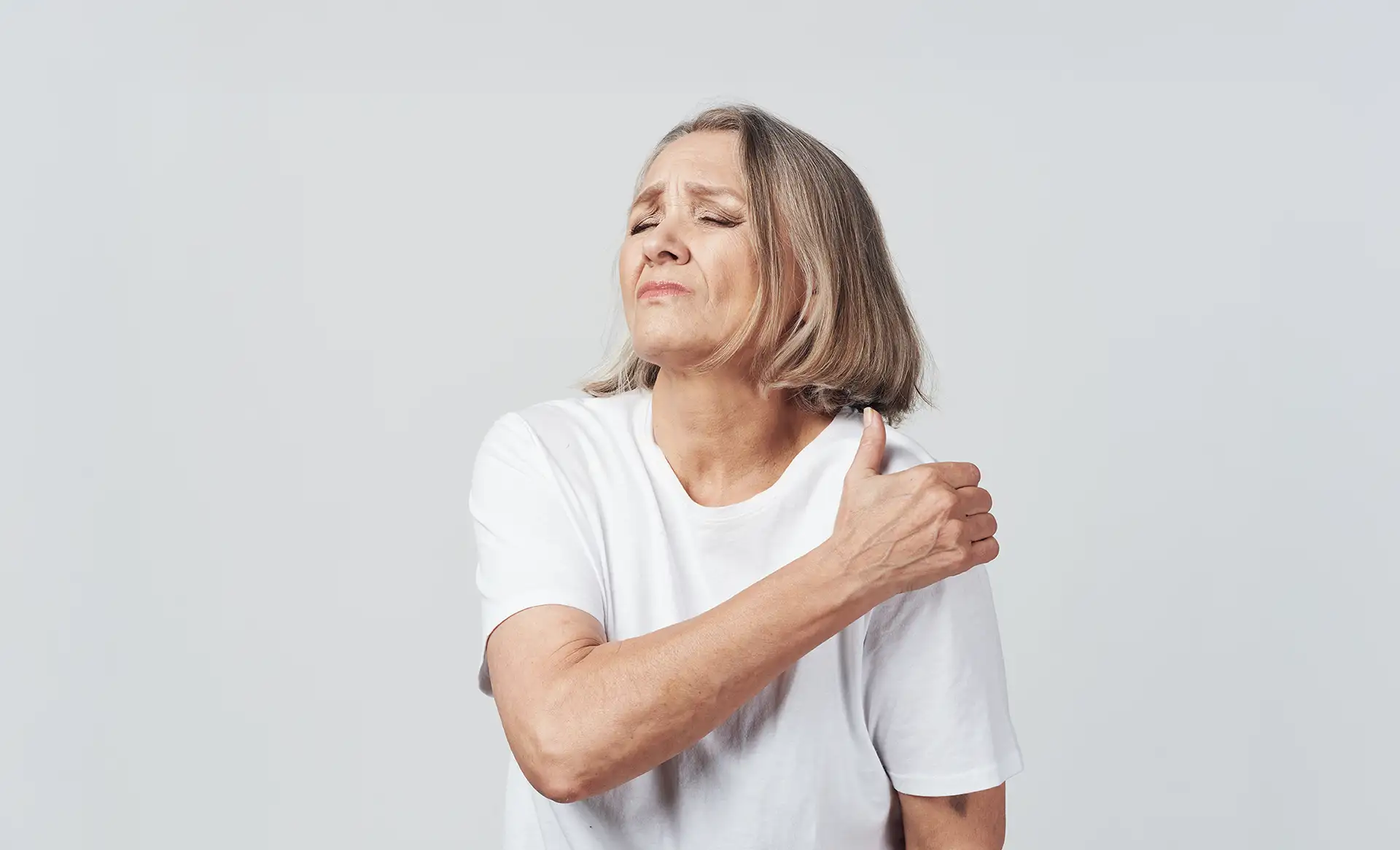Shoulder pain can be debilitating, affecting your ability to perform everyday tasks and enjoy your favorite activities. Two common culprits behind shoulder discomfort are rotator cuff tendonitis and bursitis, which often stem from a condition known as shoulder impingement syndrome. In this comprehensive guide, we will explore the causes, symptoms, and effective treatments for these conditions, helping you take the necessary steps toward recovery and shoulder health.
What is Shoulder Impingement?
Shoulder impingement syndrome occurs when the tendons of the rotator cuff and the subacromial bursa (a fluid-filled sac that cushions the rotator cuff) become irritated and inflamed. This inflammation typically happens due to repetitive overhead activities, prolonged use of the shoulder, or injury. As a result, these structures are “impinged” or compressed between the bones in the shoulder, leading to pain and restricted movement.
Causes of Rotator Cuff Tendonitis and Bursitis
- Overuse: Repetitive overhead activities, such as painting, swimming, or playing tennis, can strain the rotator cuff muscles and tendons, leading to inflammation.
- Injury: Acute injuries resulting from falls or lifting heavy objects can cause tears in the rotator cuff tendons or damage to the bursa.
- Anatomical Factors: Some people have a naturally narrower space in the shoulder joint, predisposing them to impingement.
- Posture: Poor posture, such as slouching or rounded shoulders, can contribute to impingement by altering the alignment of the shoulder joint.
Symptoms of Shoulder Impingement
Symptoms of shoulder impingement, rotator cuff tendonitis, and bursitis often overlap and can include:
- Persistent shoulder pain, especially when lifting your arm or reaching overhead
- Weakness in the shoulder muscles
- Difficulty in performing daily activities like dressing or combing hair
- Pain that worsens at night or with certain movements
- A clicking or popping sensation in the shoulder
Diagnosis
Your orthopedic surgeon will typically begin with a physical examination, assessing your shoulder’s range of motion and pinpointing areas of tenderness. Imaging tests such as X-rays, MRI, or ultrasound may be used to confirm the diagnosis and rule out other potential causes of shoulder pain.
Treatment Options
Effective treatment for shoulder impingement, rotator cuff tendonitis, and bursitis focuses on reducing inflammation, alleviating pain, and restoring shoulder function. Treatment options include:
- Rest and Activity Modification – Avoid activities that exacerbate the pain and give the shoulder time to heal.
- Physical Therapy – A tailored program of stretching and strengthening exercises can help improve shoulder mechanics, reduce pain, and prevent recurrence.
- Medications – Nonsteroidal anti-inflammatory drugs (NSAIDs) can help alleviate pain and reduce inflammation.
- Corticosteroid Injections – In some cases, injections may be considered to provide temporary relief by reducing inflammation directly in the affected area.
- Surgery – If conservative treatments fail to provide relief, surgical options like arthroscopic decompression or rotator cuff repair may be recommended.
Prevention Tips
To prevent shoulder impingement and related conditions, consider the following tips:
It is important for you to maintain good posture, especially during activities that involve prolonged sitting or repetitive motions. Incorporate regular shoulder-strengthening exercises into your fitness routine to support the rotator cuff muscles. Avoid repetitive overhead activities or take frequent breaks to minimize strain on the shoulder. Using proper techniques when lifting heavy objects to avoid undue stress on the shoulders is key when preventing potential injury.
Conclusion
Shoulder impingement, rotator cuff tendonitis, and bursitis are common but manageable conditions. By understanding the causes, recognizing the symptoms, and seeking appropriate treatment, you can regain shoulder function and enjoy pain-free movement.
Impingement syndrome is a very common cause of shoulder pain. This problem is commonly referred to as BURSITIS or TENDONITIS.
Your shoulder pain arises from a problem in the rotator cuff tendons. A tendon is a thick, cord-like structure that connects muscles to bones. The rotator cuff tendons pass between two bones in your shoulder, the acromion, and the humerus. This space is small and the tendons barely pass through as the arm is raised and rotated. With repeated overuse, a single injury, or even just wear and tear of age the tendons get pinched, or “impinged”, between the two bones and this can become painful.
Often the answer is obvious as the patient injured the tendon in an accident or remembers a specific injury. However, repeated use of the arm in the overhead position, weight lifting, tennis, or other use of the arm can also lead to impingement syndrome. Further, as we age our ability to repair the damage that results from normal activities of daily living decreases.
A bursa is a small sac of fluid that lies between tendons and bones and serves to act as a cushion for the tendons. In the shoulder, there is a bursa between the rotator cuff and the acromion. Like the tendon (tendonitis), the bursa may also become inflamed (bursitis) and increase in size which further decreases the space that is available for the cuff tendons to move. Pain results when this bursa is pinched as well. Most often the bursa and the tendons are both inflamed and painful.
Rest the shoulder – Refrain from painful motions and activities. These motions can continue to irritate the inflamed tendons and can ultimately cause more damage.
Medication – Anti-inflammatory medication can reduce the pain and inflammation in some patients and are part of the non-operative program.
Physical Therapy – Physical therapy exercises are very beneficial. Exercises are designed to improve or maintain the amount of movement and strength in the shoulder muscles and can be performed at home. I will have you consult with a physical therapist to receive instructions on how to perform these exercises.
Injections – The purpose of injections is to insert a strong anti-inflammatory medication(cortisone) into the space between the cuff tendons and the acromion. The cortisone will take a couple of days to reach its maximum effect, but will often have a dramatic effect on your symptoms. If you are diabetic, it is very important to monitor your blood sugar very carefully for several days following the injection as cortisone can cause it to rise. If your blood sugar does become difficult to control, you need to contact your medical doctor.
The only way to know for certain is to inspect the tendon during surgery. Plain X-rays like we take in the office only demonstrate bony anatomy and do not show tendons. Special studies like an MRI are needed to demonstrate a torn tendon. I will usually order these more expensive studies if you do not respond to the conservative measures that I outlined above.
Although most people will recover from this problem with the treatment previously outlined, not everyone recovers from shoulder impingement. The indications for surgery are persistent pain interfering with your activities of daily living, work, and/or sports that have failed to respond to the conservative treatment program that I have outlined.
Based on current medical knowledge the problem will likely continue and may increase in severity. The possibility exists that the pressure on the tendon will cause further tendon damage such as a tear. Of course, the problem may remain the same or even improve with time.
The purpose of the surgery is to create more space for the tendons to move by removing the inflamed bursa and the bone spur from the undersurface of the acromion. During the surgery, I also carefully inspect the shoulder joint, along with the ligaments and tendons for any damage. Any damage that is found is also repaired at the time of your surgery. The orthopedic literature shows that 85-90% of patients will have substantial relief of their symptoms following this procedure.
The surgery is done arthroscopically. An arthroscope is an instrument about the size of a pen that has a video camera on its tip. The arthroscope is inserted into the joint through a 1⁄4” incision to allow me to see the inside of your joint on a television. Two or three other small incisions are made which allows me to place special arthroscopic instruments into your joint and repair the damage.
Depending on how much another damage is encountered in your shoulder, the surgery will take between one and two hours.
Patients enter the hospital in the morning, have surgery, and go home the same day. This is called outpatient surgery.
This type of surgery is successful about 85-90% of the time. No operation is 100% successful in every patient, but the procedures we perform are reliable and will help restore your shoulder’s function. The operation is most successful at relieving pain. It is more difficult to return to vigorous overhead use of the arm in work and/or sports. The success of your operation depends on many factors including the amount of damage, compliance with post-operative rehabilitation, how strenuous the activities are that you wish to participate in.
Surgery is a complex and delicate process designed to repair damaged structures deep within the human body. Complications can occur, but fortunately are rare. The most common complication involves injury to the nerves around the shoulder and occurs in less than 1%. These are usually stretch injuries resulting from us manipulating the arm in an attempt to see the entire joint without doing damage to the cartilage. They are almost always temporary and the nerve recovers in 2-6 weeks. Permanent injury can occur but is exceedingly rare. Infection can occur (<1%) and may require antibiotics and repeat surgery.
You will be able to use your fingers, wrist, and elbow immediately after surgery. It will be beneficial to acquire a “gripee” or another squeeze device for your hand and just carry it around with you. You may shower 48 hours after surgery as long as all of the incisions are completely dry. I encourage you to walk outdoors, write, and use your arm in front of your body as soon as possible. Basically, if it hurts—don’t do it. Apply an ice pack to your shoulder for most of the first couple of days. This will help reduce pain and swelling.
For most sedentary jobs, I recommend 3-4 days off work. When you return to work your arm will be sore but you should be able to manage as long as you do no heavy lifting, pushing, pulling, or carrying. You may begin to use your arm at waist level after the first week with a 5-10lb weight restriction. Heavier lifting, or above waist level will be started 1-2 months after surgery. Return to very heavy lifting or prolonged overhead work may require 6-12 months. These are merely guidelines and may need to be altered based on your individual recovery.
Although you can usually perform the necessary exercises by yourself at home, I will have you see a physical therapist in order to receive individual instruction on an exercise program. Then they will see you once or several times per week to check your progress. I encourage you to start aerobic exercise as soon as possible. You may enjoy walking, riding a stationary bicycle within 1 week of surgery. Jogging, Stairmaster® and regular bicycle riding can start as soon as you are comfortable. Swimming, running, tennis groundstrokes, and gentle golf strokes start from 1-2 months depending on your progress. Return to overhead throwing and tennis strokes can require 3-6 months of rehabilitation. Return to weight lifting is less predictable and you may need one full year before performing the bench press. The primary goal of the procedure is to eliminate pain that occurs during activities of daily living.





